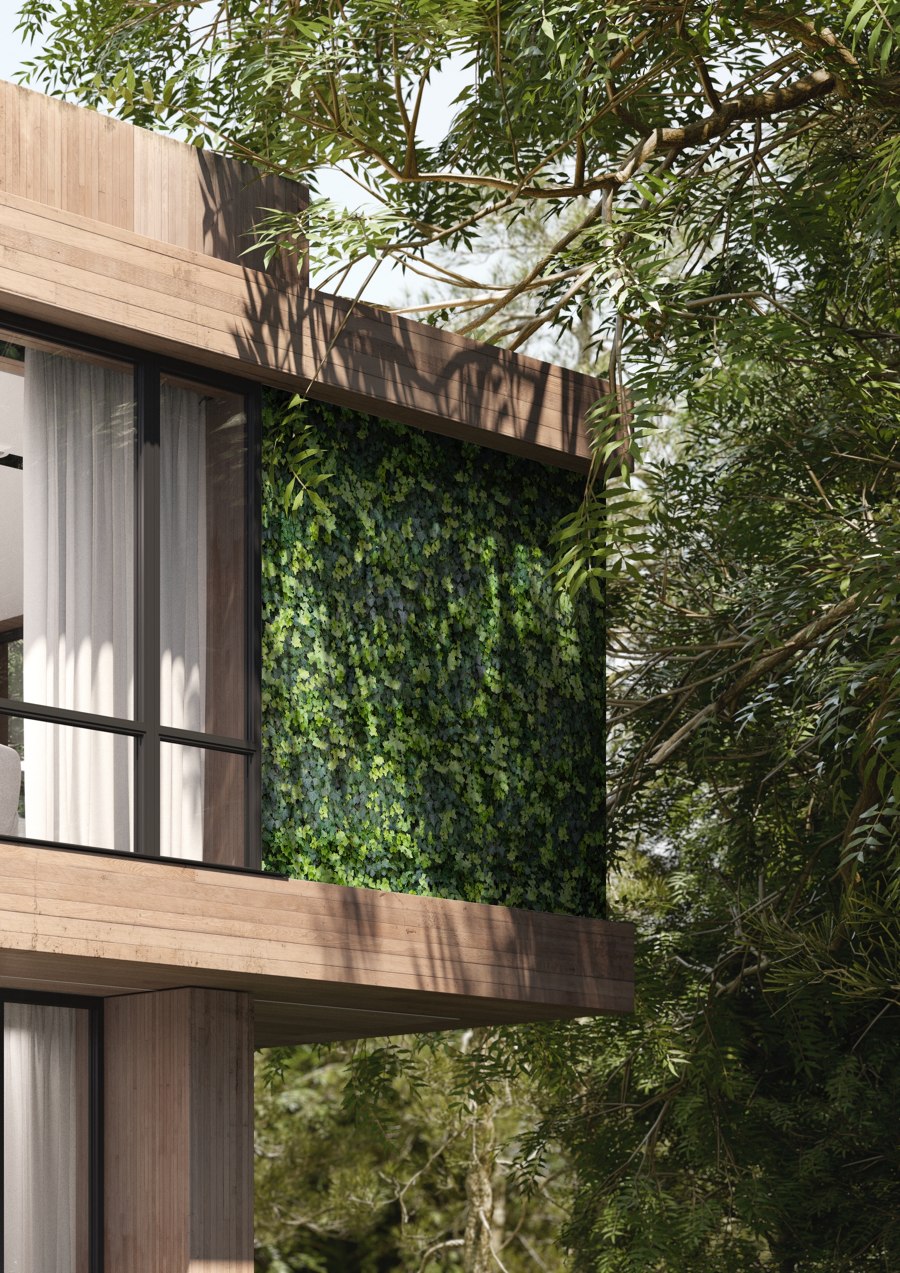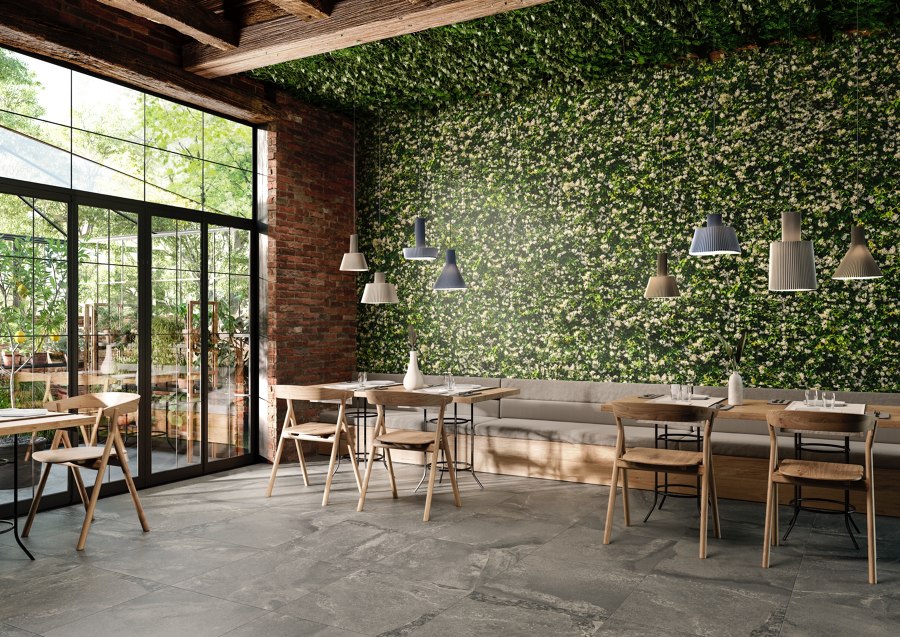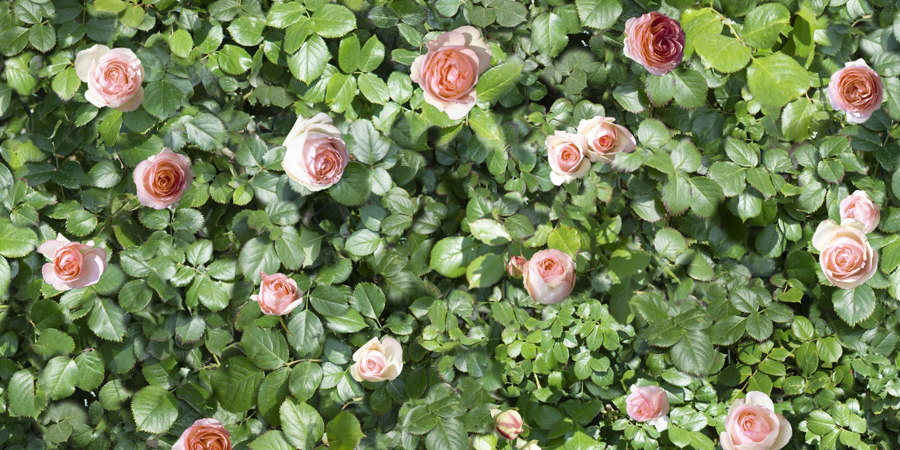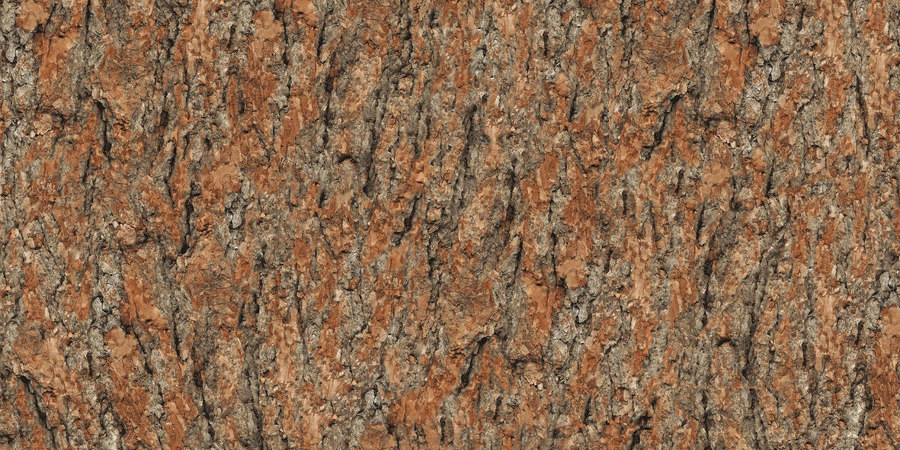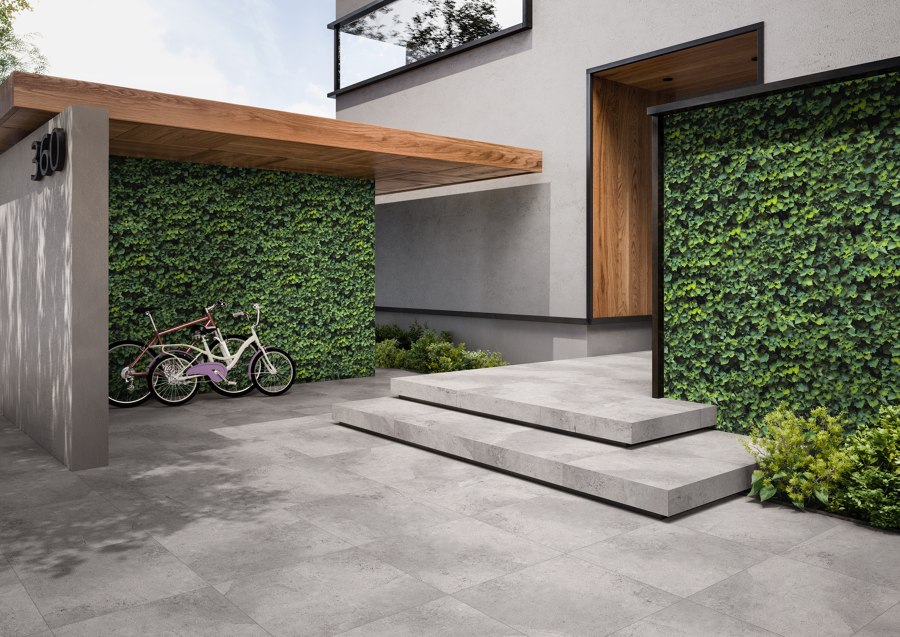Take a deep breath: Casalgrande Padana
Brand story by Alyn Griffiths
Casalgrande (RE), Italy
12.11.19
Ceramic specialist Casalgrande Padana's Limpha porcelain tiles are printed with pictures of climbing plants, which not only create an impressive visual effect but also filter harmful nitrogen oxides from the air.
Casalgrande Padana’s Limpha collection of porcelain tiles is inspired by climbing plants and can be used to introduce the effect of greenery to architectural projects
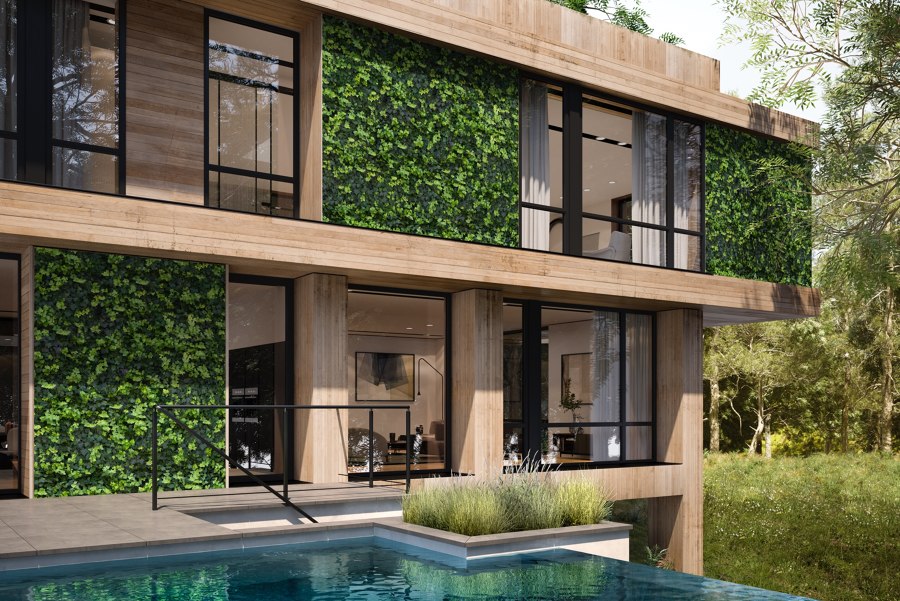
Casalgrande Padana’s Limpha collection of porcelain tiles is inspired by climbing plants and can be used to introduce the effect of greenery to architectural projects
×The pursuit of architectural solutions that enable a more ecological approach to urban development is helping to make the concrete jungle green again. Architects around the world are embracing the power of landscaping and incorporating green walls or rooftop gardens as ways of bringing nature back into the urban realm. This is seen by many as not just as an obligation enforced by sustainability regulations, or by the ever-increasing public awareness of the impact people are having on the planet, rather as a way to beautify their designs and enhance the mental and physical wellbeing of their users.
The tiles can be used inside or outside to help replicate the benefits real plants have on our physical and mental wellbeing

The tiles can be used inside or outside to help replicate the benefits real plants have on our physical and mental wellbeing
×For scenarios in which green walls or other forms of living plants might not be appropriate, Italian ceramics specialist Casalgrande Padana has developed an alternative that offers many of the same benefits. Its Limpha porcelain tiles are printed with imagery inspired by climbing plants and can be applied to surfaces to create the effect of a natural wall. In addition to their aesthetic qualities, the tiles feature an innovative self-cleaning technology that helps to remove harmful nitrogen oxides from the air, just as trees are able to. In fact, one thousand square metres of external cladding can eliminate the same quantity of pollutants as a wooded area the size of a football pitch.
The realistic imagery is printed onto panels with matching edges that can be combined to create seamless surfaces for covering large walls
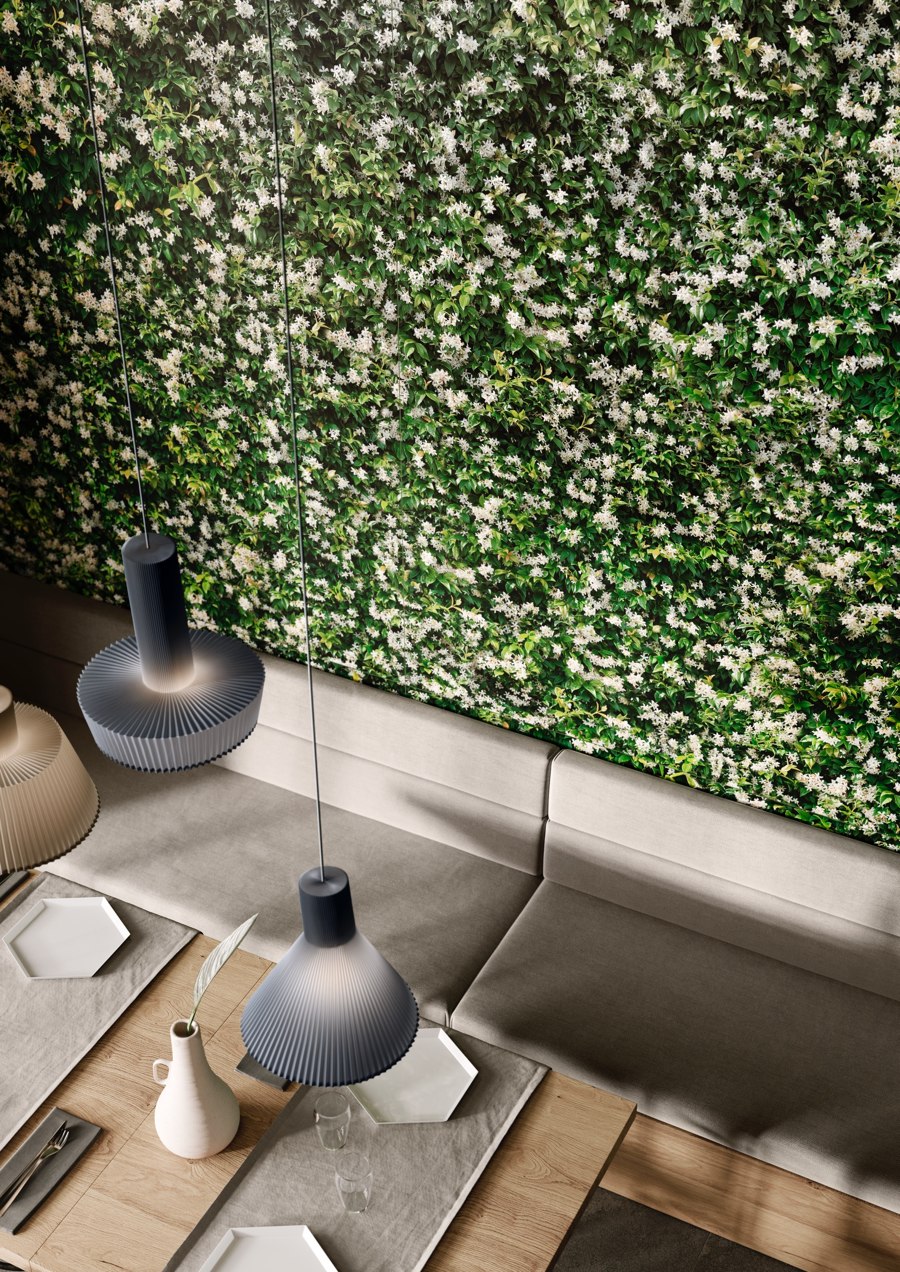
The realistic imagery is printed onto panels with matching edges that can be combined to create seamless surfaces for covering large walls
×Casalgrande Padana has been producing advanced ceramic materials for over 50 years, and throughout that time the environment has been a consistent area of focus. The company’s stoneware tiles are made using entirely natural materials and a closed-circuit process that ensures sustainability is factored in at every stage. The Limpha collection was developed to reinforce these environmental credentials by explicitly referencing their natural inspiration through the printed decoration.
'This technology is clearly inspired by the natural world. It delivers cleaner air, enabling us to have green vertical walls without maintenance problems'
The collection comprises several designs based on different climbing plants. Each version is available as a set of four end-matched panels featuring slightly different imagery to ensure continuity when applied on large surfaces. The result is a seamless surface of greenery that can be applied internally or externally and requires virtually no maintenance. Bringing to mind elegant country houses with walls covered in ivy, jasmine or roses, the realistic designs promote a sense of calmness and a connection with nature that can be hard to find in an urban context. The latest designs feature imagery of coral rose flowers and the bark of a larch tree, introducing the possibility to add some alternative colour or texture to a building.
Different designs offer a variety of pattern options, ranging from coral rose flowers to the more textural effect of larch bark
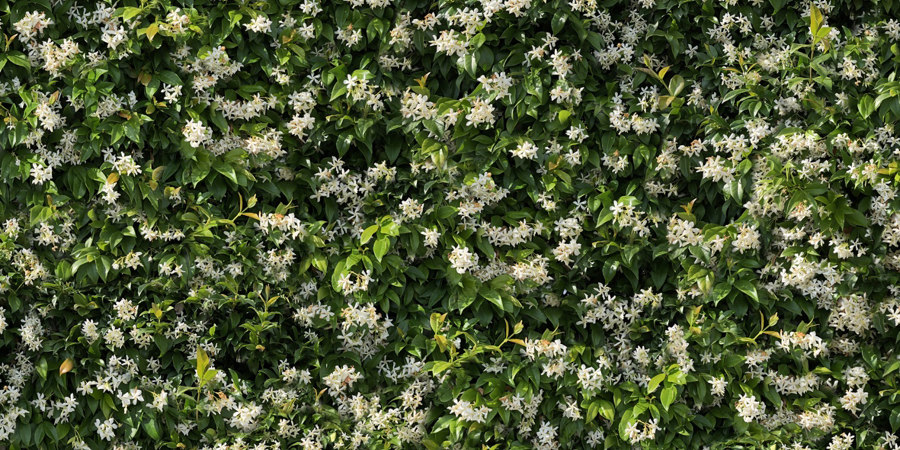
Different designs offer a variety of pattern options, ranging from coral rose flowers to the more textural effect of larch bark
×Not content with simply evoking the appearance of a living wall, Casalgrande Padana has employed a groundbreaking photocatalytic technology that enables the tiles to achieve air-purification results similar to those of real plants. The Bios Self-Cleaning surfaces contain titanium dioxide – a natural substance that reacts with sunlight to break down dirt and transform the nitrogen oxides produced by vehicles, domestic heating and some industrial processes into harmless, water-soluble nitrates. The material’s hydrophilic properties also reduce the contact angle with water, ensuring that the purified pollutants and other dirt particles are easily washed away by rainwater.
'This technology is clearly inspired by the natural world. It delivers cleaner air, enabling us to have green vertical walls without maintenance problems,’ the company explains. ‘We didn’t just choose the green of climbing plants as a decoration, we also wanted to recreate the function performed by trees: absorbing carbon dioxide and pollution and giving off oxygen, thus making a tangible contribution to the improvement of air quality.'
The tiles also offer an ecological benefit as their innovative surface treatment is able to remove harmful substances from the air

The tiles also offer an ecological benefit as their innovative surface treatment is able to remove harmful substances from the air
×Unlike real living walls, which can be expensive and complicated to install and maintain, the Limpha tiles are supplied as large panels measuring 120 x 240 centimetres, making it easy to create expansive surfaces that immediately introduce a natural element to their environment. The porcelain stoneware’s inherent properties also offer several practical benefits, including resistance to freezing, abrasion and warping, as well as exceptional colour retention. All of these characteristics make the Limpha tiles suitable for use in a wide range of private or commercial projects, where the addition of some greenery can transform otherwise unremarkable spaces into verdant havens that contribute to the health of their occupants.
© Architonic


